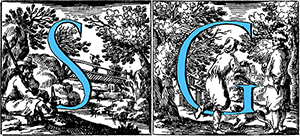
CALLOT Jaques
(Nancy 1592 – 1635)
French draftsman and engraver, born in the Ducat of Lorraine (at the time, an independent place on the eastern border of France), probably from a noble family linked to the Duke’s.
After learning, together with Jaques de Bellange (future painter and engraver), the first rudiments on the art of drawing and engraving at the workshop of the goldsmith Demagne Crocq’s, he moved to Rome at the studio of the French engraver and printer Philippe Thomassin. Here Jaques perfected himself in the art of burin by reproducing works from Italian and Flemish masters.
In 1611 he moved to Florence following Antonio Tempesta, since he was called in the city of the Medici by the architect and stage designer Giulio Parigi to realize a series of etchings for the funeral of Margherita d’Austria queen of Spain. In Florence Callot worked for Grand Duke Cosimo II and in 1617 published the famous Capricci series of his own invention and dedicated to Lorenzo de Medici. In 1620 he realized La fiera dell’Impruneta, one of his greatest masterpieces. After his return to Nancy he engraved the Balli di Sfessania, the Baroni, the Gobbi and the Great Apostles series.
Among his works of these years there are the Parterre de Nancy and La carriére de Nancy also.
Callot’s art is one of the most original expressions of the 17th century in France.
In his broad and airy compositions, the most fantastic freedom is accompanied by the sharp tracks of the sign even in the most minute figures, so numerous in the Callot’s prints.
He has produced, with admirable technical quality, etchings related to chronicles of the epoch and the daily lives of people (soldiers, buffoons, drunkards and marginalized). Characters that are often in contrast to the wonderful scenery they are in.
Between 1628 and 1631 he stayed several times in Paris, where he entrusted to Israël Henriet the printing of his plates.
Back in Nancy in 1632, he had to face both the French invasion of the Lorraine ducat and the plague. In 1633, deeply disturbed by these tragic events, he carved The Miseries of the War with which he denounced the brutality of soldiery towards the civilian population, especially the peasants.
The works of his last period are animated by an ironic and dramatic sensitivity to the fate of man. At his death in Nancy in 1635 he was buried in the Franciscan church.







